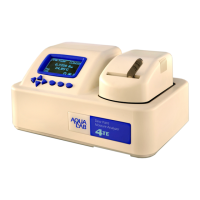14 FURTHER READING AquaLab
Cereal Foods World 26:345-349.
Brandt, L. 1996. Bound for success. Controlling water activity gives
technologists the edge in developing safe, shelf-stable foods. Food
Formulating 2:41-48.
Chirife, J., and M.P. Buera. 1994. Water activity, glass transi-
tion and microbial stability in concentrated/semimoist food systems.
Journal of Food Science 59:921-927.
Chirife, J., and M.P. Buera. 1995. A critical review of some nonequi-
librium situations and glass transitions on water activity values of
foods in the microbiological growth range. Journal of Food Engi-
neering 25:531-552.
Chirife, J., and M.P. Buera. 1996. Water activity, water glass dy-
namics, and the control of microbiological growth in foods. Critical
Rev. in Food Sci. Nutr. 36:465-513.
Farberm, J.M., F. Coates, and E. Daley. 1992. Minimum water ac-
tivity requirements for the growth of Listeria monocytogenes. Lett
Appl Microbiol 15:103-105.
Franks, F. 1991. Water activity: a credible measure of food safety
and quality? Trends Food Sci Technol March:68-72.
Garcia de Fernando, G.D., O. Diaz, M. Fernandez, and J.A. Or-
donez. 1992. Changes in water activity of selected solid culture
media throughout incubation. Food Microbiology 9:77-82.
Gibson, A.M., J. Baranyi, J.I. Pitt, M.J. Eyles, and T.A. Roberts.
1994. Predicting fungal growth: The effect of water activity on As-
pergillus flavus and related species. International Journal of Food
Microbiology 23:419-431.
Goaleni, N., J.E. Smith, J. Lacey, and G. Gettinby. 1997. Effects of
temperature, water activity, and incubation time on production of
aflatoxins and cyclopiazonic acid by an isolate of Aspergillus flavus
82

